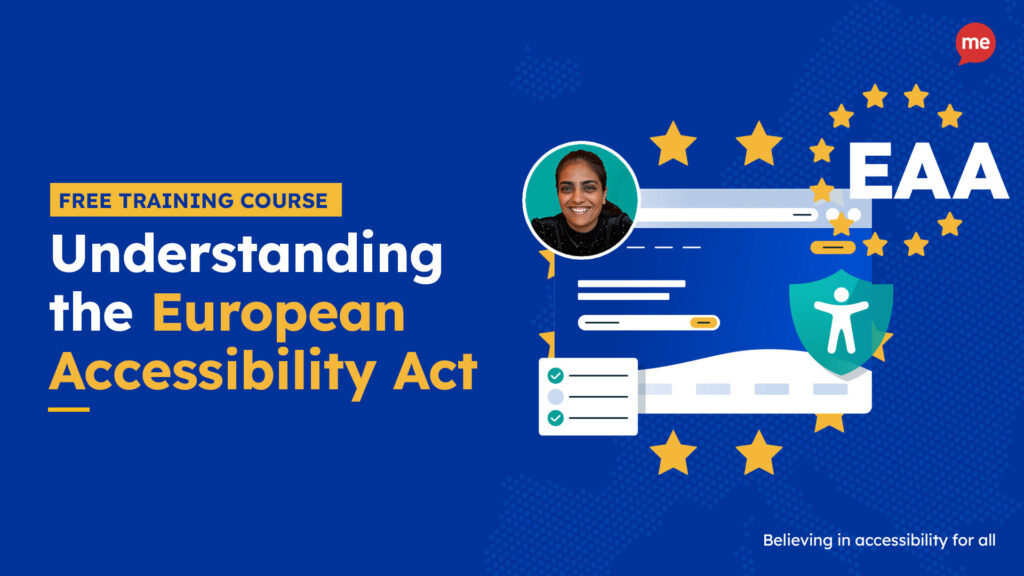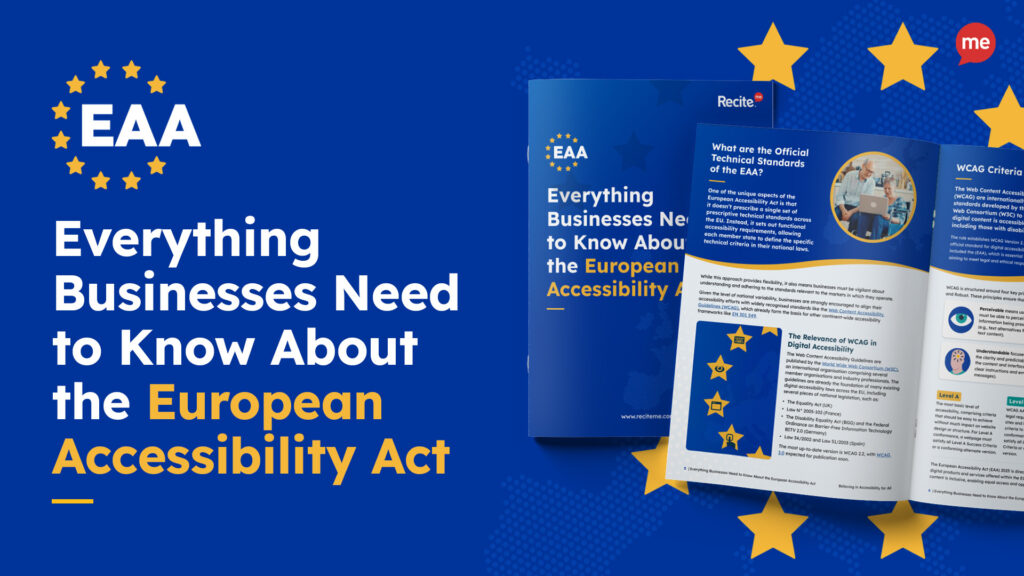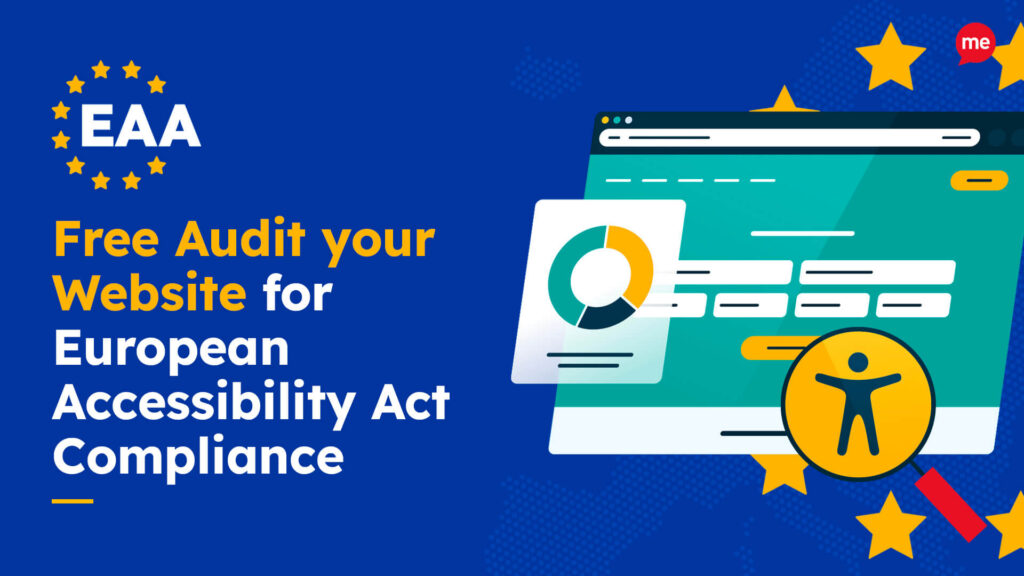Get Your Free European Accessibility Act Checklist
Download NowDay-to-day living is full of obstacles that people with disabilities need to overcome. In the physical world, this could be stairs without lifts, poor lighting, or narrow corridors. In the digital world, this could be a chaotic content structure or lack of keyboard navigation.
The European Accessibility Act (EAA) seeks to remove such barriers by setting a few ground rules when it comes to making products and services accessible. In Spain specifically, where approximately 33% of the population lives with a disability, this legislation stands to make a significant impact. And as if that wasn’t reason enough to set off on your accessibility journey, the first deadline has already arrived so Spanish business owners need to comply now. Keen to know more about the EAA and how it applies to your business? Let’s explore in a bit more detail.
What is the European Accessibility Act (EAA)?
The European Accessibility Act (EAA) is a legislative measure introduced by the European Union to make products and services accessible to those with disabilities. Although the bill was passed in 2019, the first compliance deadline didn’t take effect until June 28, 2025, requiring all newly published digital content to be accessible. Spanish businesses now have until June 28, 2030, to ensure that all digital content, both new and existing, is fully compliant.
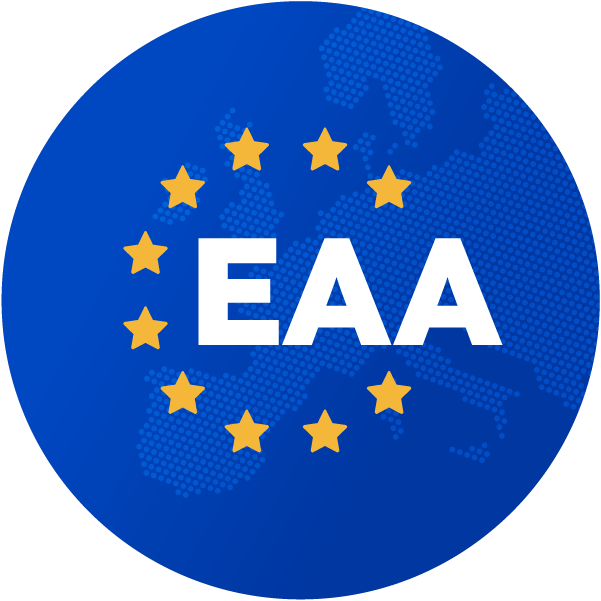
The EAA sets out accessibility requirements for a wide array of sectors, from banking and e-commerce to telecommunications and transportation. In the digital world, this means making sure things like websites, mobile apps, and online documents can be used effectively by those with physical, sensory, or cognitive impairments.
In fact, the EAA uses the Web Content Accessibility Guidelines (WCAG) — a set of technical standards set out by the World Wide Web Consortium (W3C) — as the foundation for its digital requirements. Adhering to WCAG principles can therefore stand you in good stead for complying with the EAA.
Ultimately, the EAA aims to homogenise accessibility standards across the EU, making it easier for businesses to operate across borders. Consumers benefit from a more consistent online browsing experience as a result, and businesses are given the opportunity to tap into a huge market of disabled users that has been historically underserved. In this way, everyone benefits.
Checking for EAA compliance is now easier than ever. At Recite Me, we offer a free website audit to spot any issues related to the European Accessibility Act and WCAG. You’ll get a clear action plan to help improve your website’s accessibility and meet EAA compliance.
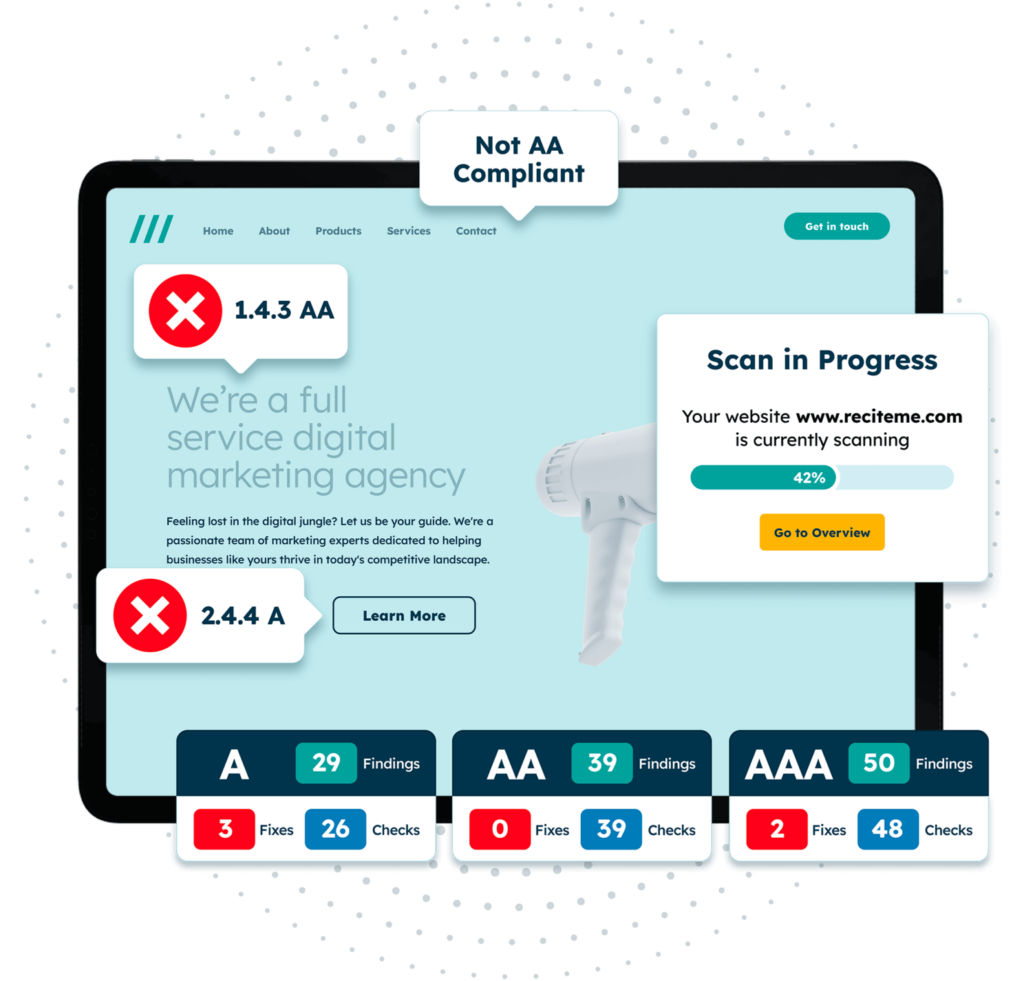
Which Spanish organisations do the EAA regulations apply to?
The EAA applies to a very broad range of public and private entities. In fact, any Spanish organisation operating in Spain, or elsewhere in the EU, with more than 10 employees and an annual turnover of more than €2 million, falls under the scope of the EAA. This includes businesses that who are based outside the EU, but continue to trade within the EU.
So, whether a bank, e-commerce retailer, or telecom provider, so long as you are providing goods and services to members of the public within the EU, and your organisation is not considered a microenterprise, compliance with the EAA is essential.
What accessibility standards govern the implementation of the European Accessibility Act in Spain
There is a number of important web accessibility laws in Spain that play a role in the implementation of the European Accessibility Act. The most significant is the Web Content Accessibility Guidelines. But, others include Spanish Law 34/2002, Law 51/2003 and UNE 139803:
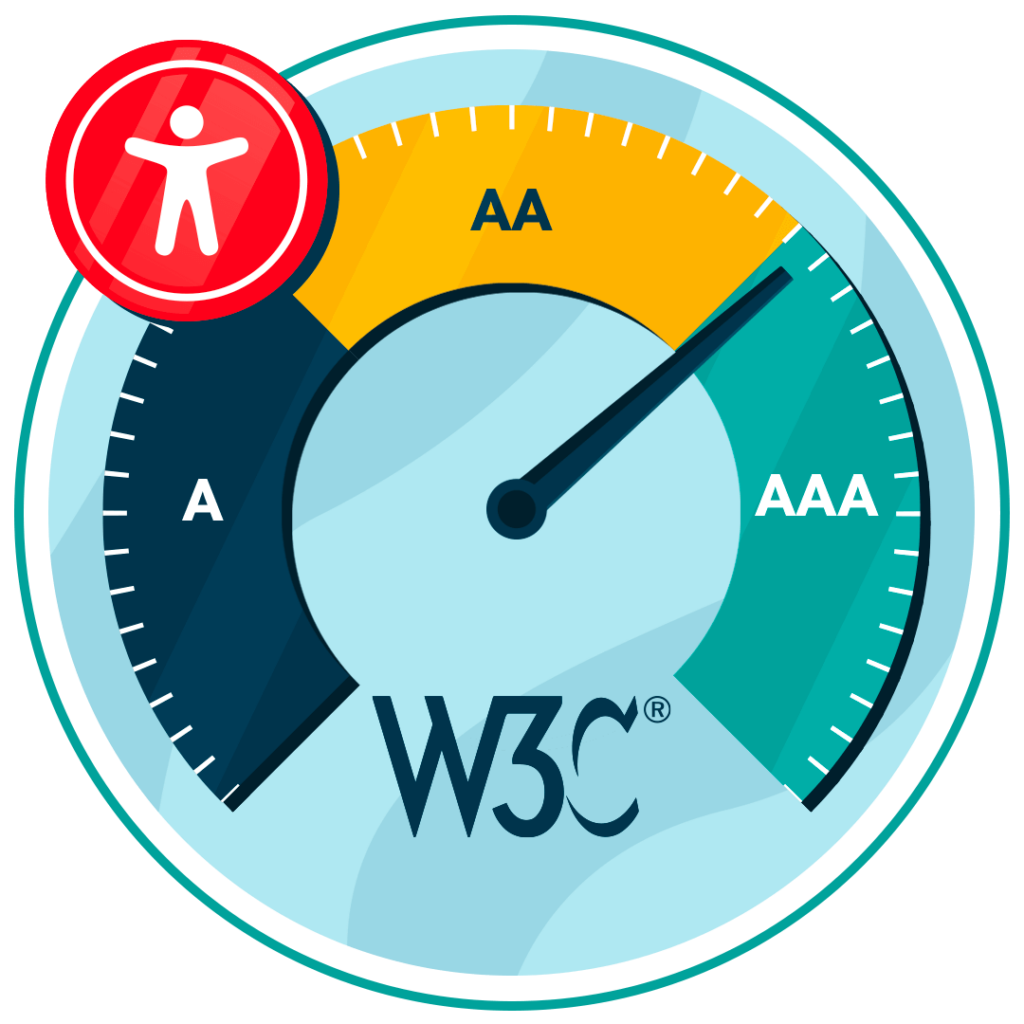
Web Content Accessibility Guidelines (WCAG)
As mentioned earlier, WCAG forms the foundation of the EAA’s digital requirements. WCAG requirements are broken down into several levels of compliance — Level A, Level AA, Level AAA — where Level A is the lowest form of compliance and Level AAA is the highest. In order for Spanish organisations to be EAA compliant, they should meet WCAG 2.1 Level AA standards.
The WCAG 2.1 standards address critical accessibility areas, including making web content perceivable, operable, understandable, and robust (often referred to by the acronym POUR). This means that any digital product or service covered by the EAA must be accessible to users with different types of disabilities.
Spanish Law 34/2002 and Law 51/2003
The Spanish Law 34/2002 and Law 51/2003 relates specifically to digital accessibility for public sector organisations in Spain. Both pieces of legislation require all government websites to conform with WCAG 1.0 priority guidelines.
UNE 139803:2012
You can think of the UNE 139803 as a more recent and updated version of Law 34/2002 and Law 51/2003. The UNE 139803:2012 requires adoption of WCAG 2.0 to Level AA standard. This applies to any organisation that meets any one of the following criteria:
- Government and government-funded organisations
- 100+ employees
- 6 million euros or more in turnover
- Providing financial, travel, utility or retail services online
The main requirements for EAA compliance as a Spanish business
By now, you’re probably well versed in the EAA, what it is, and who it impacts. But what exactly do you need to do in order to comply? This section separates the EAA’s requirements into a few key categories.
Web Accessibility
Ensuring web accessibility is a crucial part of complying with the EAA. This means designing in an EAA compliant way, that makes them usable for people with disabilities. Strategies like providing alternative text for images or ensuring sufficient colour contrast are some of the most obvious ways that Spanish businesses can meet WCAG 2.1 Level AA standards.
Mobile App Accessibility
In a similar way to web accessibility, the EAA requires businesses to make their mobile applications accessible. This includes designing interfaces that are intuitive, using clear and readable fonts, and ensuring all content is compatible with screen readers. Voice control features should also be enabled for users who may not be able to navigate apps using touch alone.
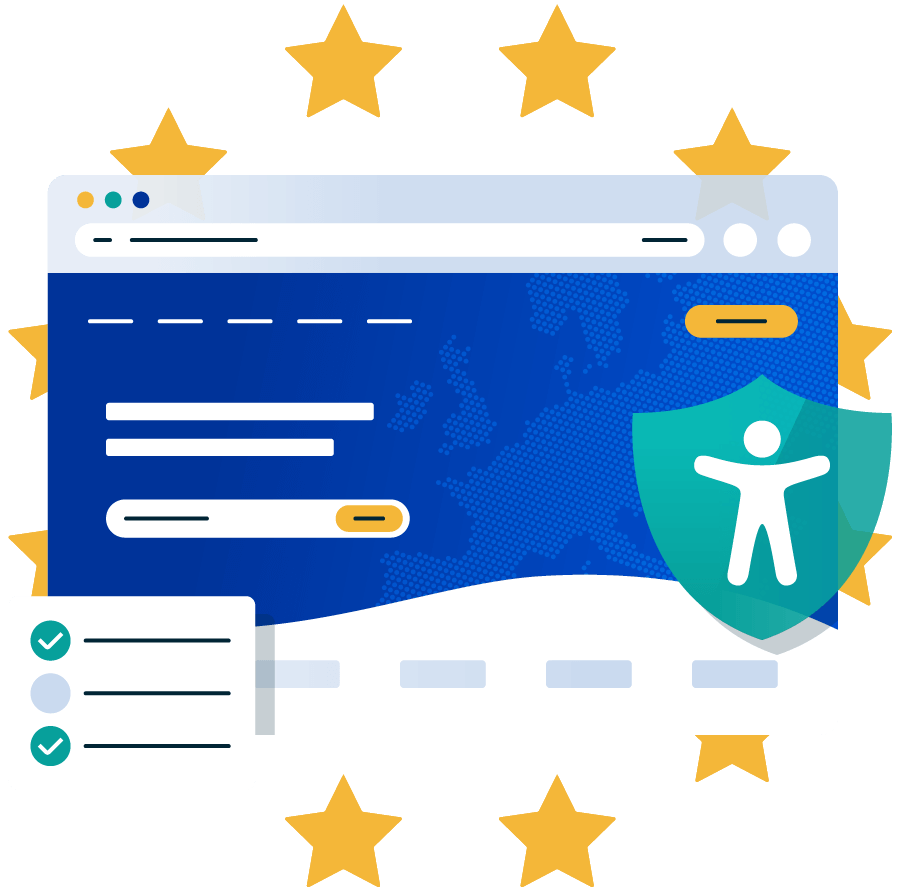
Accessible Documentation
The EAA mandates that digital documents, such as PDFs, brochures, and online forms, are accessible. This means ensuring that document formats are readable by assistive technologies like screen readers and that users can navigate through content following a logical order. Furthermore, link text should be descriptive, alluding to the link destination.
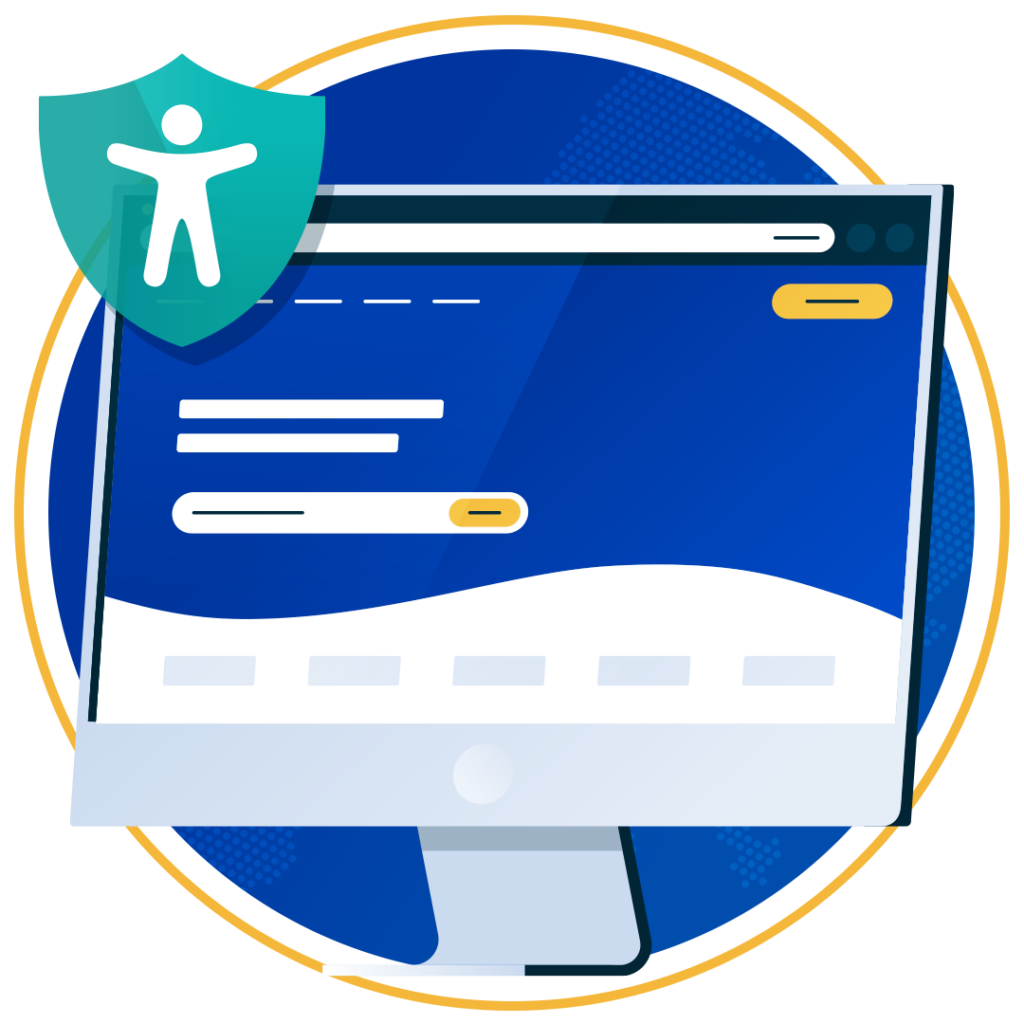
Customer Service and Support Accessibility
Under the EAA, Spanish businesses must provide accessible customer service options. Part of this means offering multiple contact methods, such as live chat, email, or phone call. This gives customers with hearing impairments, for example, an alternative means of customer support that is more suited to their specific needs
Ecommerce Accessibility
For ecommerce platforms, the EAA involves more than just creating an accessible website; it involves optimising all stages of the buying process, from browsing products to completing transactions. Accessible eCommerce sites should be set up for assistive technologies like screen readers, and interactive elements like dropdowns and checkboxes should be correctly labelled.
Make sure your website meets the European Accessibility Act with our easy-to-follow EAA checklist. It covers all the key steps to get compliant before the deadline and helps you avoid penalties. Get started today!
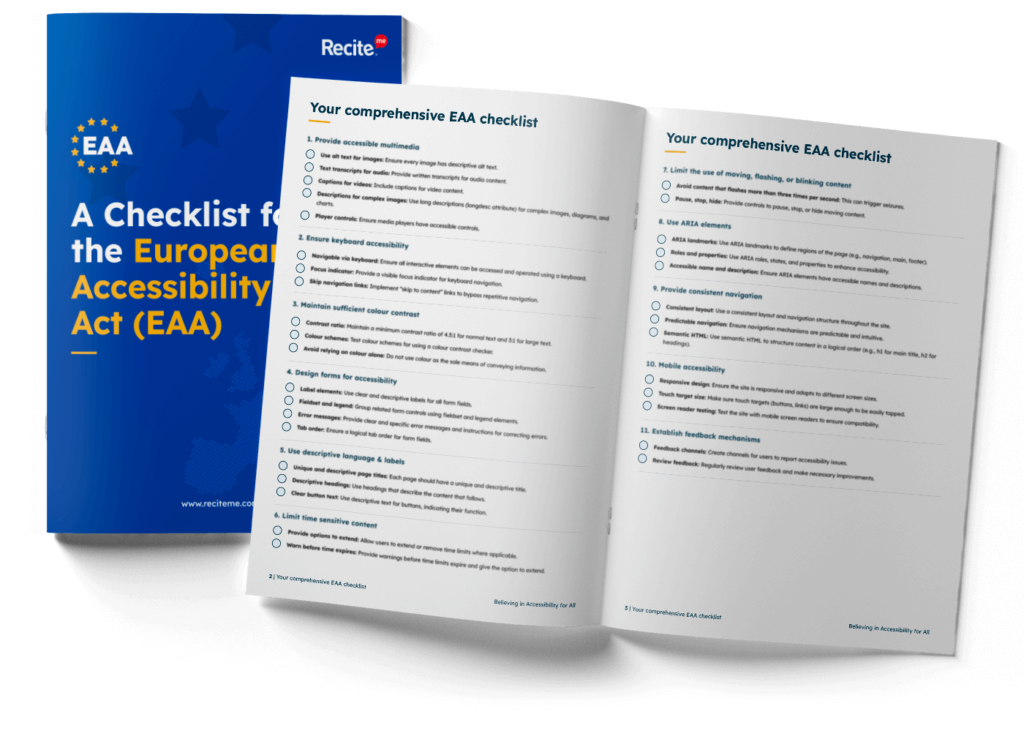
What are the risks of European Accessibility Act non-compliance in Spain?
Failing to meet EAA standards can have serious consequences for Spanish businesses. Here’s a breakdown of the main risks:
Loss of Market Share
An inaccessible website or mobile app limits the reach of a business by excluding potential customers with disabilities. As these customers are deterred by frustrating browsing experiences, they opt for more inclusive products and services offered by competitors. In Spain’s competitive market, businesses that fail to meet accessibility standards may find themselves at a severe disadvantage.
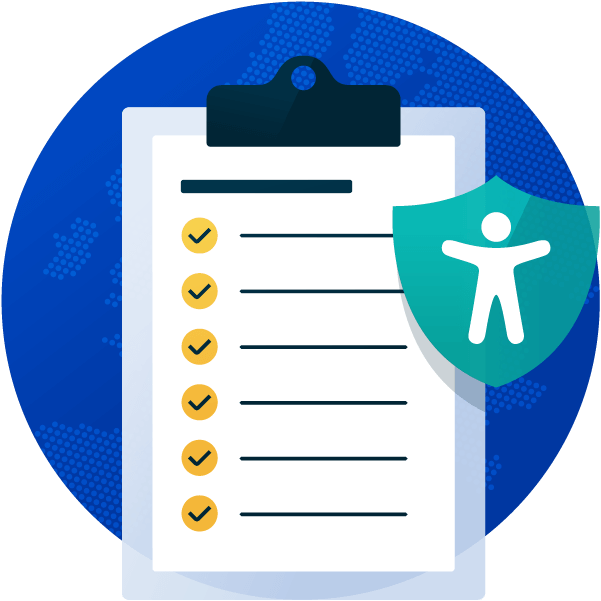
Legal Consequences
The EAA holds legal weight across the EU, and non-compliance in Spain could result in fines and other legal penalties. Businesses may be required to make costly adjustments to avoid recurring penalties or incur fines up to €300,000. In addition, repeat violations could result in suspension from operating within the EU market.
Reputational Damage
Non-compliance can also lead to significant reputational damage, as it signals a lack of commitment to inclusivity. Spanish customers increasingly value accessibility and inclusivity, and non-compliance could result in negative public perception. In turn, this could lead to a decline in customer loyalty and a poor brand reputation.
Increased Operational Costs
While it may seem counterintuitive, non-compliance can lead to higher operational costs. If a business is forced to make last-minute adjustments due to a legal issue, the costs are often higher than if accessibility had been prioritised from the outset.
Low Customer Retention Rates
For businesses, particularly in customer-facing sectors like eCommerce and hospitality, inaccessible digital platforms lead to frustration among users. Customers may abandon their interactions with a non-compliant business, leading to low retention rates and higher churn.
Steps to make your website compliant with the European Accessibility Act in Spain
Meeting the EAA requirements in Spain may seem overwhelming, but there are practical steps you can take to ensure compliance:
- Conduct an accessibility audit: Start by running an EAA audit of your website for accessibility issues. Identify areas that need improvement, and prioritise them based on the severity of the issue.
- Adopt WCAG 2.1 level AA standards: Ensure your website and digital content align with the WCAG 2.1 Level AA guidelines.
- Implement accessibility features in mobile apps: If your business has a mobile app, ensure it’s accessible by including compatibility for screen readers, voice commands, and simplified navigation.
- Train staff on accessibility: Accessibility should be an organisation-wide priority. Provide EAA training for your team, so they understand the importance of inclusivity and can contribute to maintaining accessibility across your digital platforms.
- Use an accessibility monitoring tool: Regular monitoring ensures ongoing compliance. Accessibility tools like Recite Me’s accessibility checker can automate this process by scanning your site for areas needing improvement.
- User testing with people with disabilities: Conduct user testing with individuals who have disabilities. Their feedback will provide invaluable insights and help you make meaningful improvements.
- Accessible customer support options: Offer multiple customer support channels, such as voice support, live chat, and text, to cater to users with varying needs.
Need more help becoming EAA compliant?
The following resources are packed full of actionable tips and expert advice for making your digital content compliant with the European Accessibility Act:
Free EAA Compliance Training
Take the first step to European Accessibility compliance by completing our EAA training course.
Free EAA Compliance Guide
Ensure your organisation is meeting the necessary requirements for European Accessibility Act compliance.
Free EAA Audit of your Website
Download a free accessibility check of your website. This report will highlight any EAA non-compliance and how to fix it.

